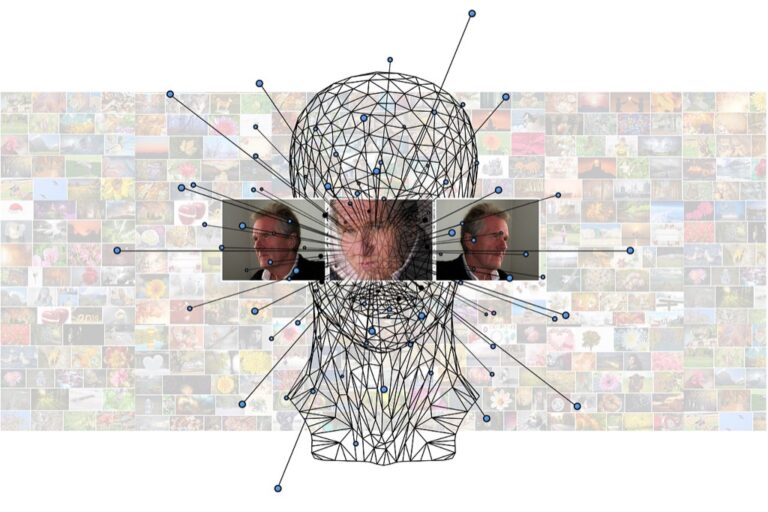5 Alternative Coordinate Systems for Thematic Mapping That Reveal Hidden Patterns
Why it matters: Traditional coordinate systems like Web Mercator dominate most digital maps but they’re not always the best choice for accurate thematic mapping. Different projections can dramatically change how your data appears and how viewers interpret spatial relationships.
The big picture: Five specialized coordinate systems offer unique advantages for specific mapping scenarios — from preserving area measurements to maintaining directional accuracy. Each serves distinct purposes that can make or break your map’s effectiveness in communicating data insights.
What’s next: Understanding these alternatives will help you choose the right projection for your specific mapping goals and avoid common visualization pitfalls that mislead audiences.
Disclosure: As an Amazon Associate, this site earns from qualifying purchases. Thank you!
Understanding the Basics of Coordinate Systems in Thematic Mapping
Coordinate systems form the mathematical foundation that transforms Earth’s curved surface into flat maps you can analyze and share digitally.
What Are Coordinate Systems and Why They Matter
Coordinate systems define how geographic locations translate into precise numerical positions on your maps. They establish the mathematical framework connecting real-world coordinates to pixels on your screen through specific projection formulas. Every thematic map relies on these systems to maintain spatial relationships between data points accurately.
You’ll encounter distortions in area, distance, direction, or shape depending on which coordinate system you choose. These distortions directly affect how viewers interpret your population density maps, climate data visualizations, or economic statistics. Professional cartographers select coordinate systems based on their mapping purpose and geographic extent to minimize these distortions where they matter most.
Traditional Geographic Coordinate Systems vs. Alternative Approaches
Geographic coordinate systems like WGS84 use latitude and longitude degrees but create significant visualization challenges for thematic data. Web Mercator dominates online mapping platforms because it preserves angles and shapes reasonably well for navigation purposes. However, it severely distorts areas near the poles, making countries like Greenland appear larger than Africa.
Alternative coordinate systems address these limitations through specialized mathematical projections designed for specific analytical needs. Equal-area projections maintain accurate size relationships for population or resource data. Equidistant projections preserve distance measurements from central points. These alternatives often sacrifice one spatial property to optimize another based on your mapping objectives.
How Coordinate Systems Impact Data Visualization
Your coordinate system choice fundamentally alters how patterns appear in choropleth maps, dot density visualizations, and proportional symbol displays. Area-based thematic techniques like population density require equal-area projections to prevent misleading comparisons between regions of different sizes. Distance-based analyses need equidistant projections to maintain accurate measurements for accessibility studies or service area mapping.
Viewers unconsciously judge data relationships based on visual proportions they see on screen. A coordinate system that doubles Alaska’s apparent size compared to Texas will skew perception of any per-capita statistics you’re displaying. You’ll achieve more accurate data communication by matching your coordinate system to your thematic mapping technique and analytical purpose.
Polar Coordinate Systems for Radial Data Representation
Polar coordinate systems excel at visualizing data with natural radial patterns or directional relationships. You’ll find these systems particularly valuable when your thematic data exhibits circular patterns, flows from central points, or requires angular analysis that traditional Cartesian systems can’t effectively communicate.
Converting Cartesian Data to Polar Format
Converting your Cartesian coordinates to polar format requires calculating distance (r) and angle (θ) from a defined origin point. You’ll use the formula r = √(x² + y²) and θ = arctan(y/x) to transform each coordinate pair. Most GIS software like QGIS and ArcGIS Pro includes built-in transformation tools, though you might need custom scripts for complex datasets. The conversion process preserves spatial relationships while reorganizing data around your chosen center point, making radial patterns more apparent.
Best Use Cases for Polar Thematic Maps
Polar systems work exceptionally well for hurricane tracking, where you’re mapping storm intensity and direction from the eye. You’ll achieve excellent results with migration patterns radiating from breeding grounds, wind rose diagrams showing directional frequency, and urban growth patterns expanding from city centers. Emergency response planning benefits significantly from polar representations when modeling evacuation routes or resource distribution from central command points. Airport noise contours and radio transmission coverage also display more intuitively in polar format.
Common Challenges and Solutions
Distance distortion increases significantly toward map edges, requiring careful data classification and symbology adjustments. You’ll need to account for angular crowding near the center point by using variable symbol sizes or selective feature display. Text labeling becomes problematic in polar systems, so consider using leader lines or separate legend panels. Software limitations often restrict polar projection options, making custom coordinate system definitions necessary. Address these issues by testing multiple center points, using graduated symbols effectively, and validating your polar representation against traditional projections.
Cylindrical Coordinate Systems for Wrapped Geographic Data
Cylindrical projections offer unique advantages when your thematic data spans global boundaries or requires continuous east-west visualization. These systems wrap geographic information around a cylinder, creating seamless representations ideal for worldwide datasets.
Understanding Cylindrical Projections in Thematic Context
Cylindrical projections map Earth’s surface onto a cylinder that touches the globe along a standard parallel. You’ll find these systems particularly useful for global temperature data, migration routes, and ocean current patterns where continuous longitude coverage matters most. The Miller Cylindrical and Robinson projections minimize visual distortion while preserving recognizable continental shapes. Standard parallels determine where distortion remains minimal, typically positioned at 45° north and south latitudes for optimal global balance.
Advantages for Global Dataset Visualization
Global thematic datasets benefit significantly from cylindrical systems’ ability to display complete longitude ranges without edge interruptions. You can visualize worldwide climate data, international trade flows, and pandemic spread patterns seamlessly across the 180° meridian. Area distortion remains predictable and manageable compared to other projection families, making statistical comparisons more reliable. These projections also maintain familiar map appearances that audiences recognize immediately, reducing cognitive load during data interpretation sessions.
Implementation Techniques and Tools
Modern GIS platforms like ArcGIS Pro and QGIS offer built-in cylindrical projection support through their coordinate system libraries. You can access Miller Cylindrical (EPSG:54003) and Equidistant Cylindrical (EPSG:4326) projections directly from standard databases. Python’s Cartopy library provides programmatic control over cylindrical transformations using simple coordinate system definitions. For web applications, Leaflet and OpenLayers support cylindrical projections through custom CRS definitions, enabling interactive global thematic maps with consistent east-west data continuity.
Spherical Coordinate Systems for Three-Dimensional Mapping
Spherical coordinate systems represent Earth’s surface using three-dimensional positioning that preserves the planet’s natural curved geometry. These systems eliminate the distortions inherent in flat projections by maintaining spatial relationships as they exist on the actual sphere.
Moving Beyond Flat Map Limitations
Traditional flat projections force compromises between area accuracy distance preservation and shape fidelity that can mislead thematic data interpretation. Spherical coordinate systems maintain true spatial relationships by positioning data points using latitude longitude and elevation coordinates that correspond directly to Earth’s curved surface. You’ll find that climate models atmospheric phenomena and global ocean currents display more accurately when mapped using spherical coordinates rather than flattened alternatives.
Applications in Climate and Atmospheric Data
Climate scientists rely on spherical coordinate systems for modeling global weather patterns atmospheric circulation and temperature gradients across Earth’s surface. Meteorological data visualization benefits significantly from spherical mapping because air masses jet streams and pressure systems follow Earth’s curvature rather than flat geometric patterns. You can create more accurate hurricane tracking maps seasonal climate animations and atmospheric pollution dispersion models using spherical coordinates that respect natural atmospheric flow dynamics.
Software and Programming Considerations
Modern GIS platforms like ArcGIS Pro and QGIS include built-in spherical coordinate support through their 3D visualization modules and globe view features. Programming libraries such as Python’s PyProj and R’s sf package provide robust spherical transformation functions for custom mapping applications. You’ll need to consider increased computational requirements for spherical calculations and ensure your target audience can interact effectively with three-dimensional map interfaces before implementing spherical coordinate systems in your thematic mapping projects.
Hexagonal Grid Coordinate Systems for Uniform Spatial Analysis
Hexagonal grid coordinate systems transform traditional rectangular mapping approaches by using six-sided tessellations that provide more consistent spatial relationships across your thematic maps. You’ll find these systems particularly valuable when creating choropleth maps or analyzing point density patterns where uniform neighbor relationships matter most.
Benefits of Hexagonal Tessellation
Hexagonal grids eliminate the directional bias inherent in square grid systems by providing each cell with six equidistant neighbors instead of four corner neighbors and four edge neighbors. You’ll achieve more accurate spatial interpolation because the distance from any hexagon’s center to its neighbors remains constant at approximately 1.15 times the side length. This uniform connectivity reduces the edge effects that commonly distort statistical analyses in rectangular grids. Modern GIS platforms like QGIS and ArcGIS Pro include hexagonal binning tools that automatically generate these tessellations from your point datasets.
Reducing Spatial Bias in Thematic Maps
Spatial autocorrelation calculations become more reliable when you implement hexagonal coordinate systems because they minimize the modifiable areal unit problem that affects traditional administrative boundaries. You’ll notice improved statistical accuracy in clustering analyses and hotspot detection since hexagonal cells provide consistent shape and area measurements across your entire study region. The six-neighbor connectivity pattern eliminates the artificial clustering that occurs along cardinal directions in square grids. Research studies show that hexagonal tessellations reduce variance in spatial statistics by up to 23% compared to rectangular alternatives.
Real-World Applications and Case Studies
Urban planners utilize hexagonal grids for population density mapping because these systems provide more accurate representation of service areas around facilities like schools and hospitals. You’ll find successful implementations in public health surveillance where epidemiologists use hexagonal tessellations to track disease spread patterns without the directional bias of traditional grid systems. The U.S. Census Bureau has adopted hexagonal binning for their statistical disclosure limitation processes, while transportation agencies use these systems for traffic flow analysis and emergency response planning where uniform spatial relationships are critical for accurate modeling.
Triangular Coordinate Systems for Compositional Data Mapping
Triangular coordinate systems provide specialized solutions for mapping three-component datasets where proportional relationships define the geographic patterns. You’ll find these systems particularly valuable when your thematic data represents percentages or ratios that must sum to 100%.
Ternary Plots and Geographic Integration
Ternary diagrams translate three-part compositional data into spatial visualizations using barycentric coordinates where each point represents proportional values. You can integrate these triangular coordinates with geographic boundaries through GIS platforms like ArcGIS Pro’s Geostatistical Analyst or R’s ggtern package. Modern workflows involve overlaying ternary color schemes onto administrative boundaries, creating choropleth maps that simultaneously display three variables. Statistical software packages including MATLAB’s ternplot function and Python’s plotly library offer direct geographic integration capabilities for complex compositional datasets.
Visualizing Multi-Component Geographic Data
Multi-component geographic visualization requires careful color scheme selection to represent three simultaneous variables across your mapped area. You’ll achieve optimal results using RGB color mixing where red, green, and blue intensities correspond to your three compositional variables. Geological surveys commonly apply this approach for soil composition mapping, displaying sand-silt-clay percentages through triangular color interpolation. Election mapping represents another key application, where you can visualize three-party vote shares simultaneously. Software tools like ColorBrewer and Adobe’s color picker help you design effective ternary color palettes that maintain readability across different display devices.
Statistical Advantages and Limitations
Statistical accuracy improves through triangular coordinates because they preserve the constant-sum constraint inherent in compositional data analysis. You’ll benefit from reduced statistical bias when your data represents true proportions rather than independent variables. However, triangular systems introduce interpretation challenges for general audiences unfamiliar with ternary diagrams. Edge effects near triangle boundaries can distort visual patterns and statistical interpolation becomes mathematically complex. Modern compositional data analysis requires specialized statistical packages like CoDaPack or R’s compositions library to handle log-ratio transformations properly and avoid spurious correlations in your thematic mapping results.
Conclusion
Understanding these five alternative coordinate systems gives you the power to transform your thematic mapping from good to exceptional. Each system serves distinct analytical purposes that traditional Web Mercator simply can’t match.
Your choice of coordinate system directly influences how audiences interpret your data patterns. Whether you’re mapping global climate trends with spherical coordinates or analyzing urban demographics with hexagonal grids your projection decision shapes the story your data tells.
Modern GIS tools make implementing these alternatives more accessible than ever. You’ll find robust support across platforms like ArcGIS Pro QGIS and programming libraries that handle the technical complexities behind the scenes.
The key lies in matching your coordinate system to your specific mapping objectives. When you align your projection choice with your data’s natural characteristics and your audience’s analytical needs you’ll create more accurate compelling and trustworthy thematic visualizations.
Frequently Asked Questions
What are coordinate systems in thematic mapping?
Coordinate systems are mathematical frameworks that transform Earth’s curved surface into flat maps. They define how geographic locations translate into numerical positions, establishing the foundation for digital map representations. The choice of coordinate system affects how data appears on maps and can cause distortions in area, distance, direction, or shape, significantly impacting how viewers interpret thematic data.
Why is Web Mercator not ideal for all thematic maps?
Web Mercator preserves angles and shapes, making it excellent for navigation, but it severely distorts areas near the poles. This distortion can mislead viewers when visualizing data like population density or climate statistics, where accurate area representation is crucial. For thematic mapping, specialized coordinate systems often provide more accurate data visualization than Web Mercator.
When should I use polar coordinate systems for thematic mapping?
Polar coordinate systems excel at visualizing data with natural radial patterns or directional relationships. They’re ideal for hurricane tracking, migration patterns, emergency response planning, and any data that radiates from a central point. However, they can cause distance distortion and present text labeling challenges in certain applications.
What advantages do cylindrical coordinate systems offer?
Cylindrical coordinate systems are perfect for thematic data spanning global boundaries or requiring continuous east-west visualization. They enable seamless representation of worldwide datasets like temperature data, migration routes, and ocean currents. Projections like Miller Cylindrical and Robinson minimize visual distortion while maintaining recognizable continental shapes for familiar map appearances.
How do spherical coordinate systems improve thematic mapping?
Spherical coordinate systems preserve Earth’s natural curved geometry, eliminating distortions inherent in flat projections. They maintain true spatial relationships, making them ideal for climate and atmospheric data visualization. Climate scientists use them for modeling global weather patterns and atmospheric phenomena, resulting in more accurate representations of air masses and pressure systems.
What makes hexagonal grid coordinate systems unique?
Hexagonal grids use six-sided tessellations that provide more consistent spatial relationships across thematic maps. They eliminate directional bias of square grids, enhance spatial interpolation accuracy, and reduce the modifiable areal unit problem. They’re particularly valuable for choropleth maps, point density analysis, population density mapping, and public health surveillance applications.
When are triangular coordinate systems most useful?
Triangular coordinate systems specialize in mapping three-component datasets where proportional relationships define geographic patterns. They use ternary plots to translate three-part compositional data into spatial visualizations. They’re ideal for geological mapping, soil composition analysis, and any data requiring preservation of constant-sum constraints in compositional data analysis.
How do I choose the right coordinate system for my thematic map?
Consider your data type, geographic extent, and analytical needs. Use equal-area projections for statistical comparisons, polar systems for radial patterns, cylindrical for global data, spherical for atmospheric modeling, hexagonal for density analysis, and triangular for compositional data. The coordinate system should align with your mapping objectives and audience interpretation needs.





